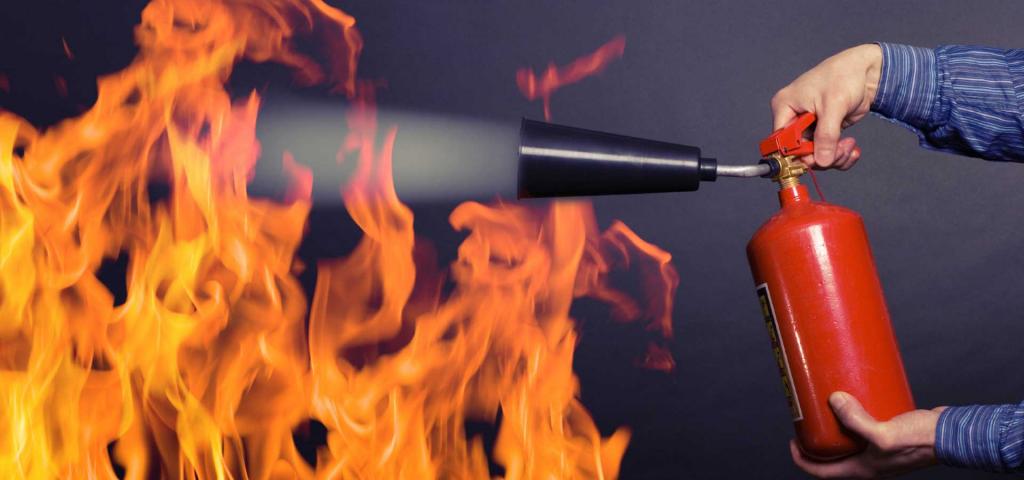It’s no secret that most people buy fire extinguishers not for safety, but to avoid fines for their absence. Meanwhile, the rules for operating such devices were invented for a reason. Not only the purse of the owner of the enterprise or car where such fire safety devices are used, but also his life depends on their observance. Therefore, periodic monitoring of OT performance is not a useless duty, but a vital procedure. Let's find out how often fire extinguishers are checked, what it depends on.
Fire extinguisher and its basic varieties
This device, designed to quickly extinguish the fire, is the most popular and affordable means of organizing fire safety. That is why they are equipped with all crowded places (enterprises, retail outlets, educational and government institutions, public and private transport).
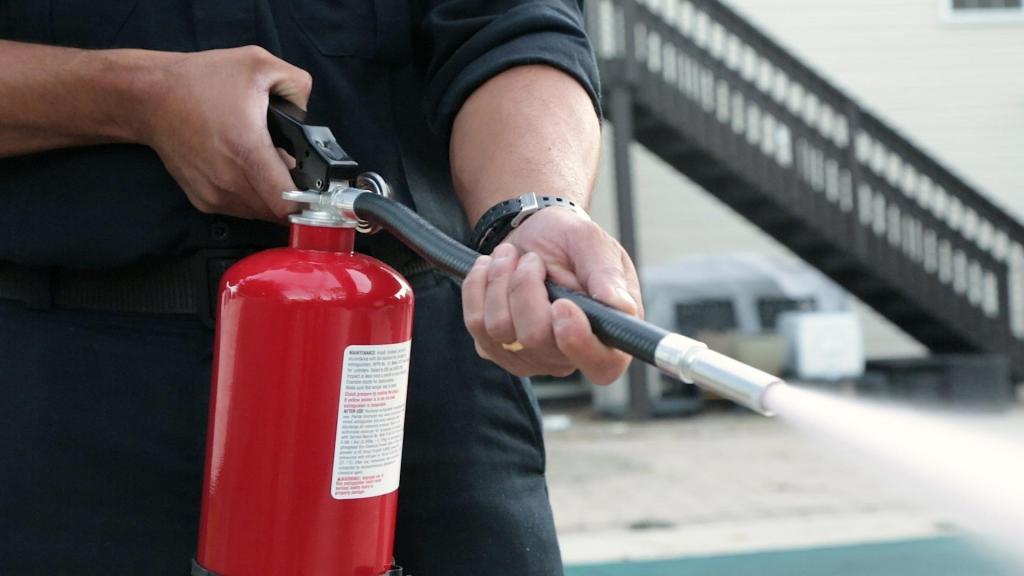
According to international standards, it has a recognizable design (thanks to which, in the event of an accident, anyone can recognize it), and simple instructions on the label will help you quickly navigate and use OT as intended.
Regardless of the variety, each fire extinguisher is a red steel cylinder inside which OT (extinguishing agent) is under pressure. On top of the device is a starting device and nozzle, through which the contents are supplied under pressure in case of activation.
Depending on the OTV, several types of fire extinguishers are distinguished:
- water (OV);
- air foam (ORP);
- powder (OD);
- carbon dioxide (OS);
- chemical foam (OCP);
- freon (OH);
- air-emulsion (OVE).
Despite such a large selection, the preference of the majority, as a rule, is on the side of the powder and carbon dioxide types of OT. This is largely due to the low cost (eighty percent of all fire extinguishers in enterprises and in auto - OP), durability and versatility.
Fire extinguisher documentation
Each device of this kind has its own mandatory package of documents. This is necessary for full control over its working condition. This must have list includes the following papers.
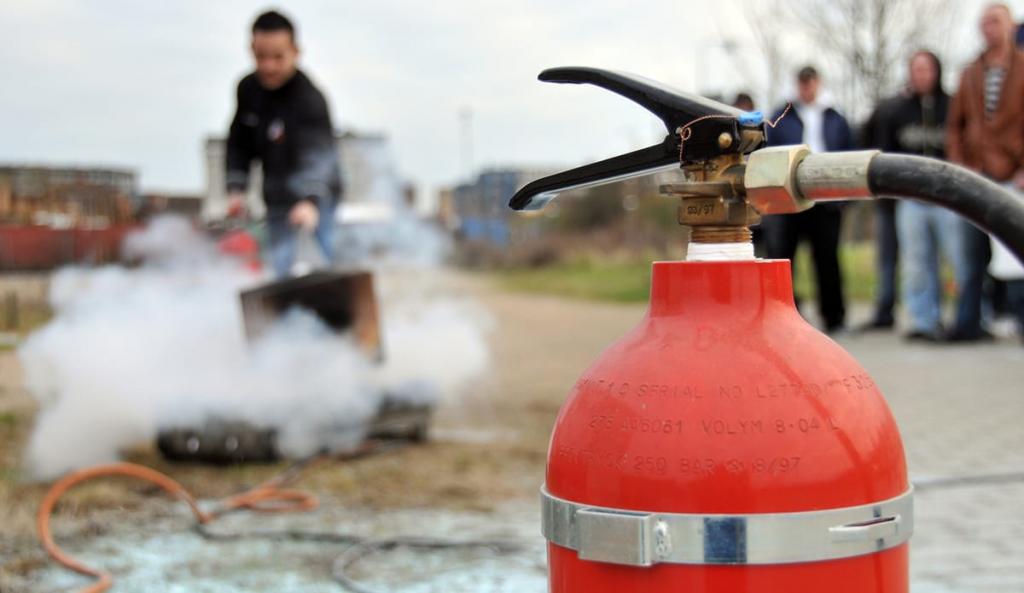
- Technical passport of the product (factory instructions and warranty card).
- Label (glued to the body or printed on it, contains data on the composition, shelf life and how the device is used).
- Operational passport. Issued at the enterprise for each instance of OT. All procedures carried out with the device are indicated here (including all checks, recharges and data on them).
- Logbook. Starts at the enterprise one for all fire extinguishers. Each of them has a separate page, where information from the operating passport is duplicated.
- A tag, it’s an additional sticker or OT status card. Attaches to the device. Here, the data and the frequency of checking the state of the fire extinguisher, as well as its recharge and those responsible for all this, are briefly entered.
From the whole list, only the basic label and technical passport do not contain information about the state of health and the frequency of its examinations. In the remaining documents, all checks and reloads are indicated without fail. This is important not only for reporting, but also for monitoring the operability of the device, for which, in fact, everything is done.
Why is periodic monitoring necessary?
Before you find out what is the frequency of checking fire extinguishers at the enterprise and in vehicles, it is worth figuring out exactly what the objectives of such an event are.
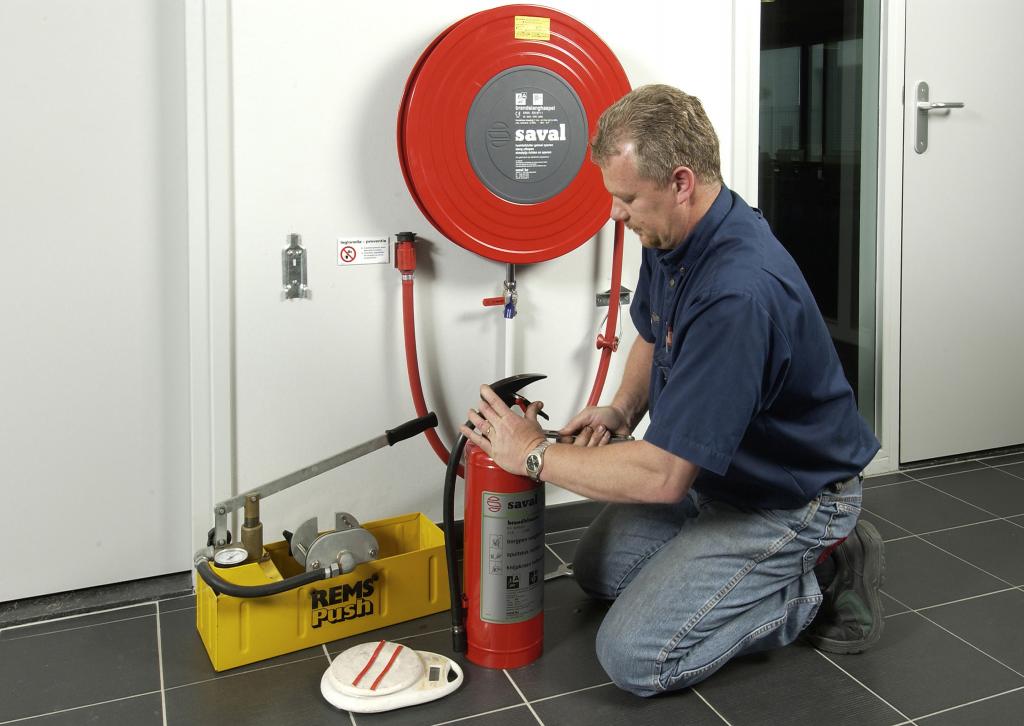
Different OTV have different properties. In particular, stability. The higher it is, the less often you have to inspect a fire extinguisher, as well as recharge it.
For example, expensive OVE with proper storage do not need recharging for ten years. Therefore, checking their condition is rather nominal in nature, although it should not be limited to only a superficial inspection.
At the same time, the composition of powder and carbon dioxide fire extinguishing devices is unstable. Therefore, they need more careful monitoring of their performance. So that in case of detection of problems in time to eliminate them. Without this, if it becomes necessary to use OT for the intended purpose, the device may not work or work at all as it should. And all this can lead not only to material, but also to human victims.
In addition to operability, periodic inspection is important for monitoring:
- fire extinguisher storage area;
- the reliability of their fixation;
- the possibility of free access to them in case of fire;
- the presence of readable, understandable instructions for working with the device.
What regulatory document governs the frequency of inspection of fire extinguishers in the enterprise?
Although fire safety rules, like the design of fire extinguishing devices, are the same in most countries of the world, each of them has its own nuances. Based on this, each state creates its own standards for OT. In the Russian Federation, the frequency of inspection of all types of fire extinguishers is regulated by a set of rules: SP 9.13130.2009.
There is also a mention of this in another document - GOST R 51057-2001.
It is these two standards that should be guided in case of doubt or questions regarding the frequency of inspection of fire extinguishers.
Varieties of control
According to the current state Russian standard, there are several factors affecting the frequency of examinations of OT. The frequency of testing fire extinguishers depends on:
- type of active substance;
- storage conditions.
The same factors affect the frequency of recharging the device.
Also check happens:
- superficial (inspection of the appearance of the device is carried out at the enterprise by the employee responsible for fire safety);
- full (testing the performance of mechanics, the state of the active substance, is carried out by specialists).
Based on the data of the second type of control, OT is recharged, except when it is planned.
Types of Periodic Monitoring
The current set of rules today 9.13130.2009 provides for the following types of checks:
- primary;
- quarterly;
- annual.
Separately, the frequency of checking fire extinguishers in rooms with increased danger is highlighted. It depends on storage conditions and the type of active substance, which they adversely affect.
Primary control
Such a check is not periodic, as it is carried out once before using the device. It is superficial. According to the rules, the following are inspected:
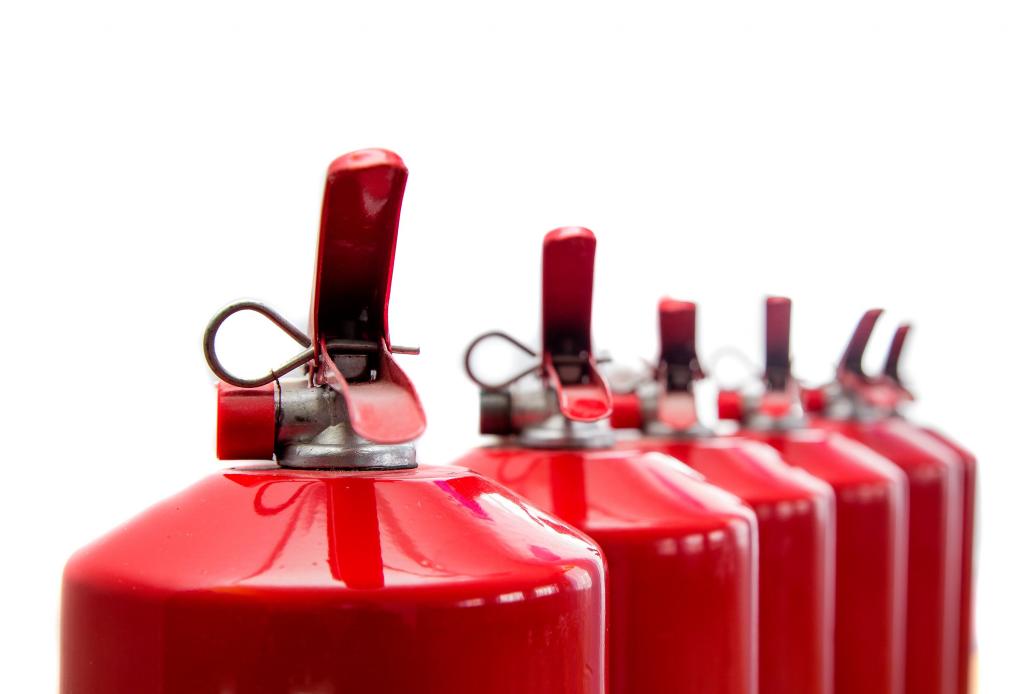
- body and parts integrity;
- their serviceability;
- clear instructions
- storage location of the device.
Data on this inspection are recorded in the journal, operating passport, as well as on the tag, which is attached to the device itself.
Quarterly control
From the name of this type of inspection, you can understand what frequency of testing fire extinguishers it provides - once every three months. This procedure should be carried out both with OT at the enterprises, and with those installed in vehicles.
Like the primary, this one is superficial:
- inspection of the installation site of the fire extinguisher;
- approach / approaches to it;
- external surface analysis of the physical state of the device.
Information about the results is entered in the journal, passport, tag.
Annual inspection
Most important. It is produced once every twelve months. Unlike others, it is more in-depth. In addition to the external inspection of the fire extinguisher, approaches to it, pay attention to the state of the active substance. If it does not meet the requirements, recharge or disposal is carried out.
Features of the annual inspection depend on the OTV.
For the period of the annual inspection, the devices passing it must be replaced from the reserve fund. Therefore, when planning this procedure, it is worthwhile to calculate the time so that different devices go through it in turn. In addition to powder fire extinguishers, the monitoring of which is already selective in nature.
The frequency of checking and reloading fire extinguishers depending on their type
Each type of OT has its own characteristics of operation. The table below shows the frequency of checking fire extinguishers - OP, OU, OX, OV, OVE, OVP.
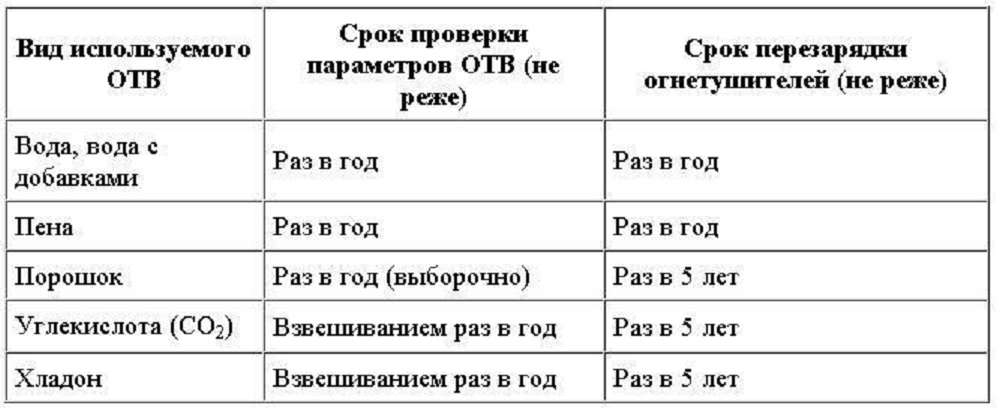
Depending on the type of active substance, the control method differs.
To check powder fire extinguishers with a frequency of once a year (meaning full inspection), you should choose any of the party, disassemble it and examine the basic operational parameters of the fire extinguisher powder. If at least one of them does not meet the standard, all such devices are sent for recharging or for scrap. After all, the cost of filling them with a new substance is often not much lower than the purchase price of new OT.
The tested parameters of the active substance include the following:
- appearance;
- the presence / absence of lumps, impurities;
- flowability;
- the destructibility of small lumps to a state of dust when they fall from 0.2 m;
- humidity;
- dispersion.
The number of devices examined in this way should be three percent of all similar, available, but not less than one piece.
Varieties of carbon dioxide and chladonic RT (due to the gas contained inside them) are checked once a year in a different way. They are weighed. And if the difference with the initial mass is more than five percent, recharging is necessary, as well as diagnostics of the mechanism in order to find the cause of the over-planned losses.
With a thorough check of the health of the contents of the varieties of OM, OVE and ORP, their contents are collected in a special container, where they are tested according to basic parameters. Depending on the result of the study, the OTV is either regenerated or disposed of, and a new substance is charged into the cylinder.
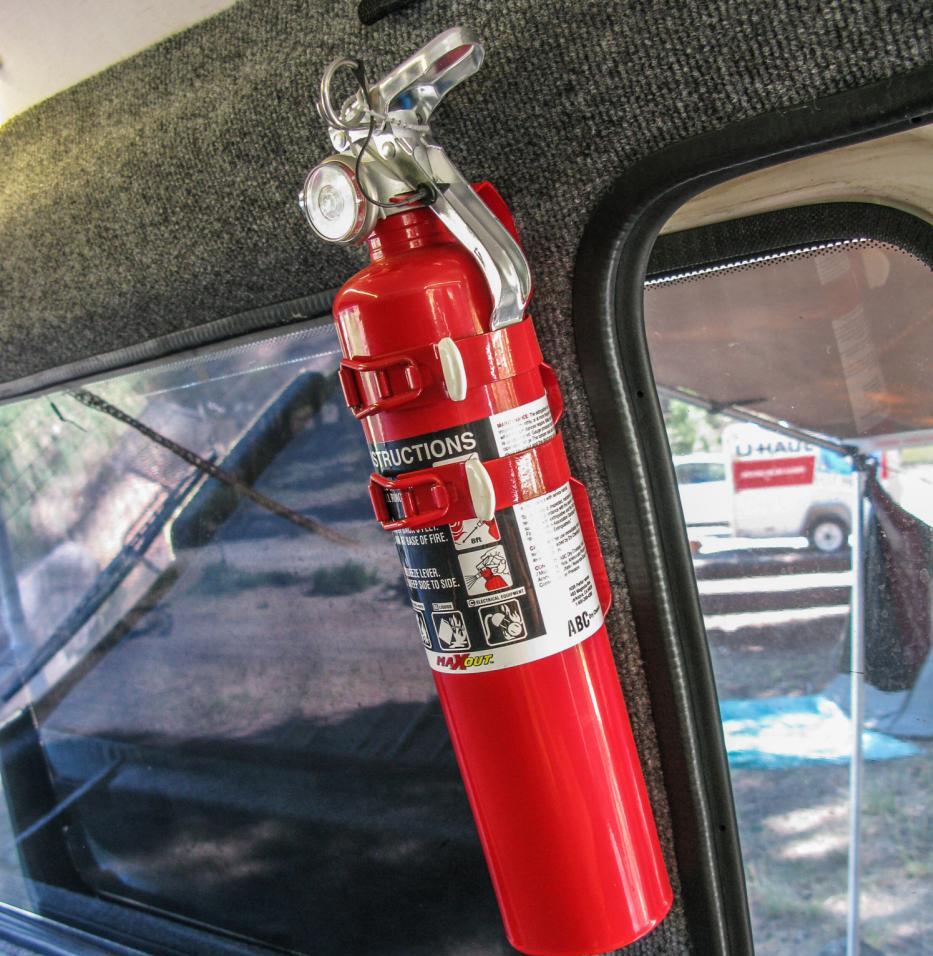
Regarding the frequency of inspection of automobile fire extinguishers - it is the same as for other OT (primary, quarterly, annual). It should be borne in mind that most often in vehicles used powder devices. Therefore, they will have to be disassembled annually as a preventive measure.
Be sure to take into account that checking does not always mean recharging, with the exception of water, foam and water-based fire extinguishers. These varieties must be recharged annually. In the case of powder, carbon dioxide or chladonic RTs, if a careful examination of the active substance showed its excellent condition, recharging is performed once in five years.
Considering the features of the periodicity of monitoring the state of fire extinguishers, it is worth remembering that there are one-time varieties. When checking them, in case of a malfunction, they are written off and sent to the scrap. Otherwise, the frequency of their verification, as with reusable ones. The affiliation of a particular device to a particular variety should be written on its label.
All information about the most important annual check is also recorded in the journal, passport, on the tag. When reloading, the content type must be indicated.
The state standard, in addition to inspections and refueling, also provides for its testing at least once every three years.
Fire extinguisher control in hazardous areas
In conclusion, we consider the frequency of testing fire extinguishers (carbon dioxide and powder) stored in an environment that especially affects their performance. The increased danger for such varieties of OT is represented by the premises:
- with high / low temperatures;
- direct sunlight (for carbon dioxide);
- high humidity (for powder);
- the presence of substances in the air that can lead to corrosion of the metal components of the container, etc.
These storage locations may include:
- workshops in which high or low temperature is a prerequisite for work;
- cars in the cabin of which fire extinguishers hang in places where they are constantly exposed to sunlight.
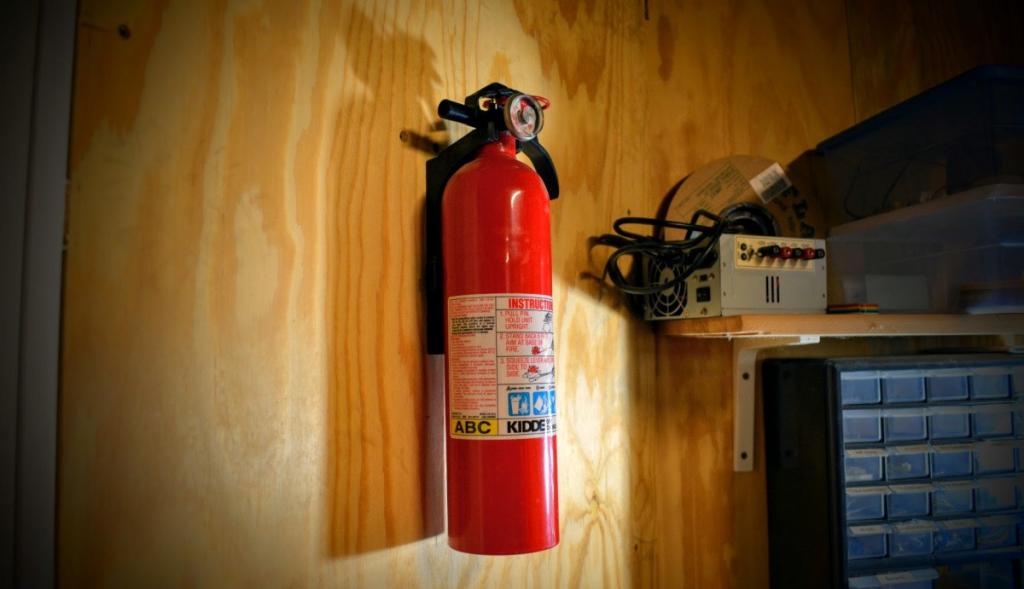
Also, simply unheated rooms or those in which the water supply broke through may begin to pose a danger.
In cases where there is a suspicion that the fire extinguisher was stored or continues to be stored in a place with such conditions, a full check is carried out not once a year, but once every six months. This periodicity of testing powder extinguishers is particularly relevant. After all, after staying in an environment with increased danger, they may be completely inoperative.
By itself, monitoring the condition of OT does not cause such difficulties as recharging them, for which professionals from the corresponding structures have to pay extra. It is this unpleasant duty that is the most common reason for neglecting the rules of periodic inspection of the state of fire extinguishers. And no matter how painful it is to part with hard-earned money, verification and reloading should be carried out according to the rules, because at stake is the most precious thing for everyone - his life, and it is priceless.
